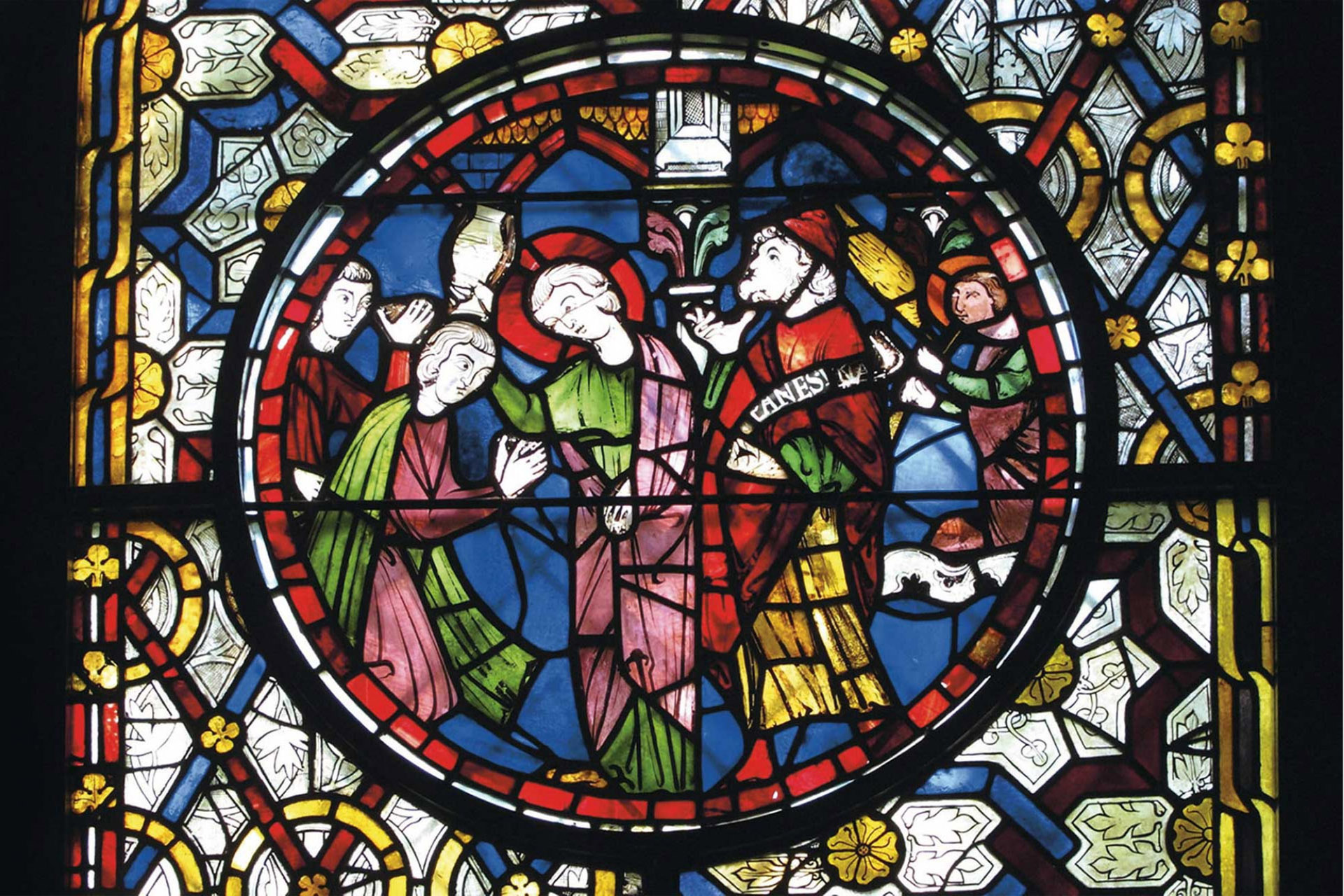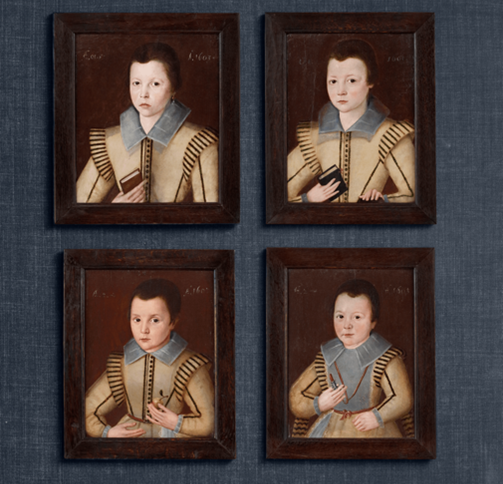On Thursday 10 February, 15 MEMS MA and PhD students enjoyed a special field trip to three exciting collections in London, where we were guided by expert curators through a wealth of exciting portraits, devotional objects, locked letters, and maps. Laura Romain, a MEMS MA student, shares her reflections from these encounters in this week’s blog.
We began the day at the Philip Mould Gallery, where not even the overcast sky could discolour the enthusiasm the eponymous Philip Mould met us with as he gave us a brief introduction about his Gallery and the works of art he and his team of researchers have curated. He then left us in the capable care of Lawrence Hendra, head researcher of the gallery, whose insight and knowledge of the paintings he showed us was insurmountable. We began with the middling talent betrayed by the hands and collars of Four Portraits of the Ffolliot Brothers (pictured above). We learnt much about the relevance of the various coral items the boys were either holding or wearing, and how their posing and the items they held told us about their ages and personalities. What the image fails to capture, however, is the faint outline of a painting underneath one of the portraits, from where it is believed that the artist painted over an old commission after the patron failed to either pay his commission or collect it!
After seeing perhaps the only in-situ painting of Winston Churchill, our attentions were then guided to, what would become, my personal favourite painting in the gallery, the charming, Portrait of a Young Girl in a White Apron by Anthony van Dyke. I like to think that there is something fond in the measured exasperation of her sidelong stare, although, perhaps that is just me leaning too much into the speculation that the girl depicted in this painting is van Dyke’s illegitimate daughter. Whatever the truth of the matter, I think you can agree that this is a truly splendid painting!

After this, there was a short reprieve before we made our way to the Sam Fogg Gallery. Here we met the wonderful Dr Jana Gajdošová who showed us around the gallery for a very hands-on experience with the various reliquaries and sculptures the gallery had on display. Looking at a charming wooden carving of Saint Sebastian, it was an exciting deviation from the norm when, as Dr Gajdošová was telling us that the remaining arrows stuck into some of the holes riddling Saint Sebastian’s body, she demonstrated that each arrow was made to fit every wound by taking one of the arrows and moving it to a different entry wound!

After this, Dr Gajdošová showed a fascinating reliquary of a virgin martyr, fascinating me once again when she told us that sometimes reliquaries such as these would contain the skull of a child. She assuaged any concerns we might have had by promptly removing the top of the head of the reliquary and showing us the, thankfully, hollow insides!
It was really amazing to be allowed to interact with art and sculpture so personally, reminding us that art was not merely made to be looked at, but interacted with.
As we left the gallery to collectively travel to the British Library, the sky at last succeeded in waking the city up for us, bathing us all in the resplendent golds of mid-afternoon sunshine. Spring was in our steps and the crispness of the air, both fitting accompaniments to the reconstitution of the narratives surrounding Elizabeth I and Mary, Queen of Scots we would find in the British Library exhibit, Elizabeth and Mary: Royal Cousins, Rival Queens. Introducing us to this brilliant show was Anna Turnham, who is a PhD student based in MEMS as part of her CDA with the British Library. And she helped to curate this exhibition!
Being an early modernist myself, and one who is particularly interested in Elizabethan drama, from an early age the life and reign of Elizabeth I has always captured my interest. Needless to say, I found myself in wordless awe through much of the exhibit! From their early lives, so different in experience, but alike in trauma and heartache, it was eye-opening to see the course of their lives plotted out, and the red string of fate tying their lives together, looked to me more like a river of blood.
On a slightly less morbid note, I was especially captivated by the research behind the ciphers used and developed by Mary and her confidants. All brought to life by a digital display which began by unpicking the base of the cipher, revealing how it was made and how it was then applied to the letters Mary wrote and exchanged with those still loyal to her. Secrets and history were to be unravelled before our very eyes.
In all, I believe that this sentiment is the true sum of the day those of us spent in London. A day where hidden gems were found to us, and the history of the world we live in was made richer for all the art, sculpture, and lives we were introduced to.
If you have the chance, please do yourself the kindness of visiting these galleries, as well as the British Library, and may your world be made even a little bigger than it was before.

